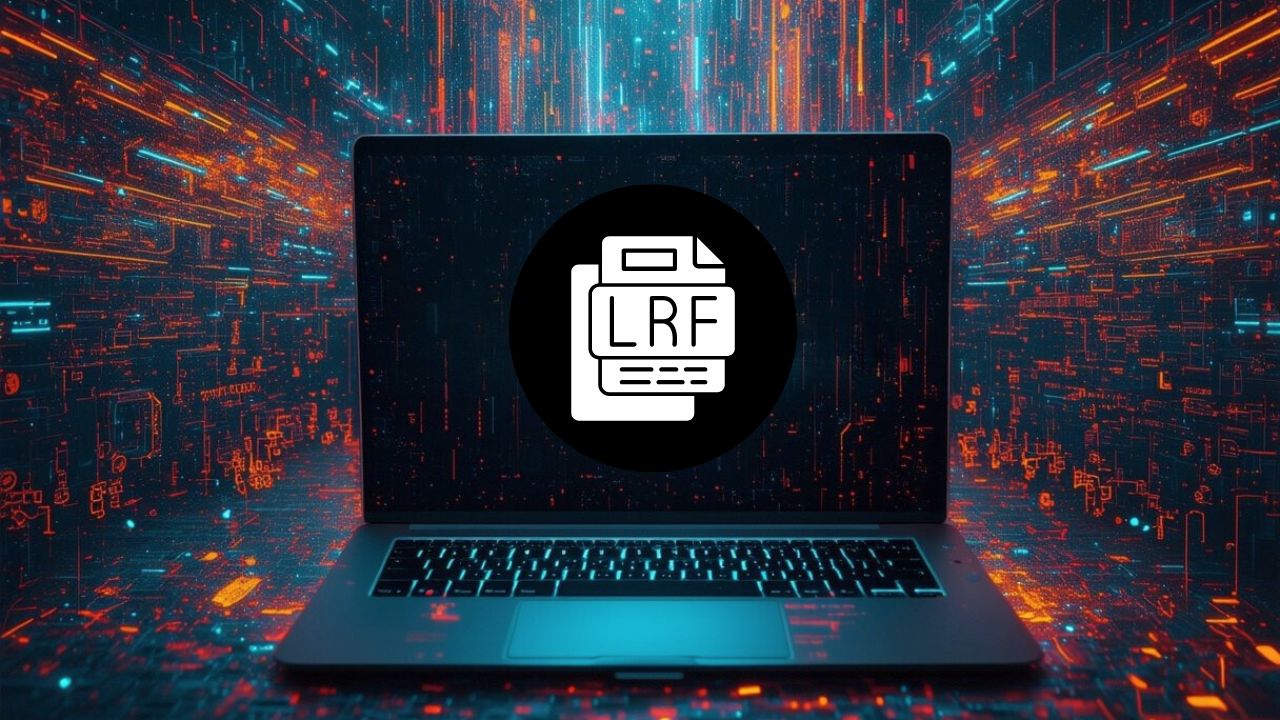Have you ever popped an SD card out of your DJI drone, Osmo Action, or Osmo Pocket and spotted files labeled “.LRF”? If you’re wondering, “What Are LRF Files?” you’re not alone—these mysterious files puzzle many users at first. In this guide, we’ll unravel – why they appear with your drone footage or Osmo recordings, and how to manage them like a pro. Find clear answers to make your workflow smoother. Let’s get started!
What Are LRF Files?
LRF files, in the context of DJI products, stand for Low Resolution File. These are compressed video files automatically generated by devices like DJI drones, Osmo Action (3, 4, 5 Pro), DJI Action 2, DJI Pocket 2, and Osmo Pocket 3.
Unlike the high-quality MP4 or MOV files that capture your footage in full detail, LRF files are smaller, low-resolution versions of the same video, typically at 1280×720 pixels (720p) using the H.264 codec. They’re lightweight and designed to make your workflow easier, especially when using DJI’s mobile apps or editing software.
LRF Files vs. Sony’s Outdated eBook Format
Interestingly, the term “LRF” has another meaning outside the DJI ecosystem. Historically, LRF stood for Sony Portable Reader File, a format developed by Sony for its branded eBook readers. These files contained text, images, and chapter markers for eBooks, stored in a compressed format to save space. Sony discontinued this format in 2010, switching to ePUB for its eBook store. Although tools like LRF converters can still transform documents into Sony’s LRF format, this usage is now mostly outdated.
For DJI and Osmo users, LRF files are all about video previews and editing efficiency.
Let’s see why these files exist in your drone or Osmo footage!
Why Do DJI Devices Create LRF Files?
DJI devices generate those files for several practical reasons. Here’s why they’re part of your recording process:
- Quick Previews: The DJI Mimo app, used with Osmo Action and Osmo Pocket products, relies on LRF files for its Trim Download feature. This allows you to preview and edit clips on your phone without downloading the full, storage-heavy MP4 file. As a result, you save time and space on your device while reviewing footage on the go.
- Playback: When you play back videos directly on your drone’s controller, Osmo Action, or Osmo Pocket, the device often uses the LRF file. These low-resolution files load faster and require less processing power, ensuring smooth playback without taxing the device’s hardware.
- Proxy Files for Editing: For video editors, LRF files can act as proxy files in software like Adobe
Premiere Pro or DaVinci Resolve. Proxy files are smaller versions of your footage that make editing smoother on less powerful computers. Once editing is complete, you can swap them out for the high-resolution originals for final rendering. - Social Media Sharing:: If you want to quickly share a clip on social media, LRF files are a convenient option. By renaming the .LRF extension to .MP4, you can use these smaller files for fast uploads without sacrificing too much quality for casual posts.

Can You Turn Off LRF File Creation?
Currently, you can not disable LRF file creation. This can feel limiting, as LRF files may take up to 10% of your SD card’s storage. However, there’s no need to worry! You can easily manage these files to keep your storage under control.
How to Manage LRF Files?
Since LRF files are here to stay, here are some practical tips to handle them without cluttering your storage:
1 Delete LRF Files After Transferring Footage
Once you’ve transferred your high-resolution MP4 files to your computer or cloud storage, you can safely delete the LRF files if you don’t need them for previews or editing. Be sure to double-check that your main footage is backed up first!
2 Rename LRF Files for Playback
If you accidentally delete an MP4 file, you can rename the .LRF file to .MP4 (e.g., “video.lrf” to “video.mp4”). This allows you to play the low-resolution version using any standard media player like VLC or Windows Media Player.
3 Use LRF Files as Proxies
For video editors, LRF files can speed up the workflow.
Proxies are low-resolution copies of your footage that make editing easier on less powerful computers by reducing lag and processing demands. With DJI’s LRF files, you get ready-made proxies at 720p.
Just import them into editing software like Adobe Premiere Pro, edit your project, and then relink to the high-resolution MP4 files for final export. This approach is great for heavy projects, like 4K videos or high-frame-rate clips.
4 Organize Your Files
Create separate folders for MP4 and LRF files when transferring footage. This keeps your workspace tidy and makes it easier to delete unneeded LRF files later.
5 Check Storage Regularly
LRF files can accumulate quickly, especially during long shoots. Monitor your SD card’s storage and clear out LRF files periodically to free up space.
Common Issues with LRF Files
While LRF files are helpful, they can cause a few headaches. Here are some common problems and how to solve them:
- Timecode Mismatch in Editing: LRF files recorded at a lower frame rate (e.g., 30fps for a 60fps video) can cause syncing issues in software like DaVinci Resolve. To fix this, manually adjust the frame rate or avoid using LRF files as proxies for high-frame-rate footage.
- Storage Concerns: LRF files add up over time. Regularly back up and delete them to keep your SD card lean.
- Playback Errors: If you delete an LRF file, your DJI device might display an “Invalid File” error when trying to play the corresponding MP4. Always keep either the MP4 or LRF file for playback compatibility.
In Conclusion
LRF files may seem like an annoyance at first, but they serve a purpose for anyone working with Osmo Action, Osmo Pocket, or drone footage. By understanding their role—whether for quick previews, device playback, or editing proxies—you can decide whether to keep or delete them based on your workflow. While you can’t stop your DJI device from creating LRF files, managing them is straightforward with a bit of organization.
Next time you spot an LRF file on your SD card, you’ll know exactly what it is and how to handle it. Happy filming, and enjoy capturing those stunning moments with your gear!
FAQs About LRF Files
- Can I play LRF files on my computer? Yes, rename the .LRF file to .MP4, and it will play on most media players like VLC or QuickTime.
- Do LRF files affect my video quality? No, LRF files are separate from your high-resolution MP4 files and don’t impact their quality.
- Why can’t I disable LRF files on my DJI device? DJI designed LRF files as an integral part of their ecosystem for previews and app functionality, so there’s no option to turn them off.
- Are LRF files the same as SRT files? No, SRT files contain subtitle or telemetry data, while LRF files are low-resolution video files.

